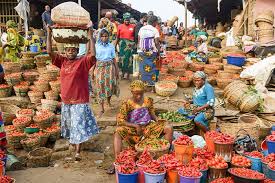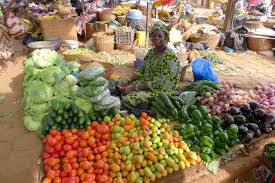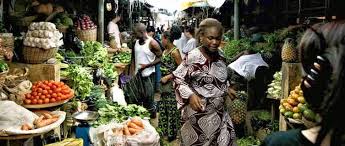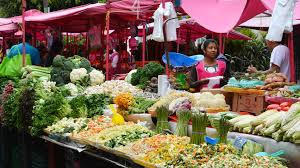Everybody is interested in prices, either as a producer or a consumer. In agriculture, price theory is concerned with the economic behavior of farmers, consumers, and owners of factors of production such as land, labor, and capital. It examines the flow of agricultural goods and services from producers to consumers.
The Workings of the Price System in Agriculture
The price system is an economic organization in which individuals engage in agricultural activities in an atmosphere of freedom. These individuals could be farmers (producers), consumers, or owners of factors of production such as land or machinery. There are legal and social institutions in every society, and the economic actions of individuals in agriculture must conform to these institutions.
The price system relates mainly to a perfectly competitive system. In agriculture, individuals own the factors of production, such as land, labor, and capital. These individuals have the right to dispose of these factors in accordance with the laws prevailing in the society or country. Thus, farmers have the right to acquire, dispose of, or lease agricultural property at will.
They have the freedom to enter into contracts, to borrow or lend at an agreed price, and to choose any occupation. Farmers are free to buy and sell agricultural goods and services from anyone and to anyone based on mutual benefit. Thus, the price system in agriculture is a system of mutual exchanges and coordination that guides and organizes economic activity efficiently, leading to an efficient allocation of resources.
Read Also: How To Grow Cassava
Limitations of the Price System in Agriculture

There are some limitations that can be noticed in the price system, particularly in agriculture. Firstly, there is always an element of uncertainty when constant adjustments are taking place in the forces of demand and supply. For example, fluctuations in the prices of crops due to weather conditions or market instability can create uncertainty for farmers.
The process of adjustment is often painful and costly. Secondly, mistakes creep in as the agricultural economy is often engulfed in inflationary or deflationary processes. If, for example, the supply of agricultural resources exceeds the demand for them, in the adjustment process both supply and demand will decrease. So, the price system in agriculture is costly and uncertain.
Price System as it Relates to Efficiency in Agriculture
Every price system seeks to attain efficiency with the limited resources at its disposal. In agriculture, efficiency refers to the ability to make the best use of available resources such as land, labor, and capital. There are two major types of efficiency, namely technical and economic efficiency.
When an agricultural economy is producing the maximum output by making the fullest use of available resources and technology at its disposal, then the economy is said to be technically efficient.
The system is then producing on its production possibility curve. On the other hand, an agricultural economy achieves economic efficiency when it is producing the largest possible output of goods and services from its available resources.
When the system achieves economic efficiency, it also achieves technical efficiency and fulfills consumers’ preferences by producing those agricultural goods and services that people want with their available incomes. A deviation from this situation, in the sense of a change in the combination of goods and services, will lead to economic inefficiency. It will make someone better off while making another person worse off.
The Role of Prices in a Perfect Agricultural Market

In a competitive agricultural market, the price mechanism works through the supply and demand of goods and services. These, in turn, are determined by their prices. Prices determine the production of innumerable agricultural goods and services.
They organize production and help in the distribution of agricultural goods and services, ration out the supply of goods, and provide for economic growth. There are five basic roles of prices in agriculture, which are:
- What and How Much to Produce
- How to Produce
- To Determine the Distribution of Income
- To Utilize Resources Fully
- To Provide an Incentive for Growth
What and How Much to Produce in Agriculture
Prices help in solving the problem of what to produce and in what quantity should we produce what we want to produce. This is the first role of price. In agriculture, the allocation of scarce resources in relation to the composition of total output is considered. Resources such as land, water, and labor are no doubt scarce.
Therefore, society has to decide about the agricultural goods to be produced to meet the basic needs of food, clothing, and other necessities. Once the nature of goods to be produced is decided, then their quantities are to be decided.
For example, how many metric tons of grains such as maize and millet, how many hectares of land to allocate for cash crops, and so on. Since the resources of the economy are scarce, the problem of the nature of goods and their quantities has to be decided on the basis of the priorities of society.
If society gives priority to the production of more consumer goods now, it will have less in the future. A higher priority on capital goods implies fewer consumer goods now and more in the future.
Consumers will have to decide on which of the agricultural commodities to purchase. As they are independent, their taste, priority, and income determine to a large extent the level/quantity of goods they will purchase. These thus have an effect on the price, which in turn has an effect on the quantity of agricultural goods and services to produce in the economy.
Read Also: How To Start A Piggery Project
How to Produce in Agriculture

Determination of the technique to use for production is another issue the price system tries to handle. Every farmer aims at using the most efficient productive process. An economically efficient production process in agriculture is one which produces goods with the prices of the factor services and the quantity of goods to be produced.
A farmer uses expensive factor services in smaller quantities relative to cheap resources. In order to reduce the cost of production, they substitute cheaper resources for the more expensive ones. If capital is relatively cheaper than labor, the farmer will use a capital-intensive production process. Contrary wise, if labor is relatively cheaper than capital, a labor-intensive production system will be adopted.
In underdeveloped countries where labor is relatively cheap, techniques involving more labor contribute to the least cost, while in developed economies where labor is relatively expensive, capital-using and labor-saving techniques combine efficiency with minimum costs.
Since one price for a single commodity prevails in a free enterprise economy, only economically efficient farmers can continue in the industry. Those incapable of paying resources their minimum reward (prices) will either close down or shift to the production of some other commodity.
To Determine Income Distribution in Agriculture
In a free enterprise economy, product distribution and income distribution are interdependent. In agriculture, it is a system of mutual exchange where the producers (farmers) and consumers are largely the same people. Farmers sell their agricultural products for money and then spend that money on purchasing goods and services.
Consumers receive incomes as factor service owners. Thus, income flows from owners of resources (consumers) to producers and back to consumers. This ensures the distribution of income and brings about equality.
To Fully Utilize Resources in Agriculture
The price mechanism helps to ensure the full employment of resources in any agricultural economy. This can be achieved if there are high investments in the agricultural sector. In a growing agricultural economy, equality between saving and investment is brought about by reductions in interest rates.
When the economy is approaching full employment by an efficient use of resources, income then grows at a rapid rate, and so do savings. Investments often lag behind, which can be raised to the level of the rate by interest-rate reductions.
Thus, the rate of interest acts as an equilibrating mechanism; however, the rate of interest cannot be relied upon exclusively for this purpose in an agricultural economy nearing full employment. Therefore, monetary and fiscal measures, and physical controls are also required to influence the decisions of farmers and consumers regarding saving and investment.
To Provide an Incentive for Growth in Agriculture
Prices are an important factor in enhancing agricultural growth. The impetus for improvement, innovation, and development comes through the price mechanism. Higher prices and profits encourage large agricultural producers to spend large amounts of money on research and development to improve and develop better farming techniques.
Limitations of the Price System in a Perfectly Competitive Agricultural Market

The price system does not work perfectly well in a free agricultural economy as one may think. Where there are no laws, there would be no offense, so there are some restrictions imposed on the price system directly or indirectly to limit the workings of the price system. Let us now take a look at them:
1. Government Directives: Governments often issue directives to farmers so that they would produce goods of different types and quantities which are required to meet social wants.
2. Administrative Controls: At times, there are impositions of administrative controls to regulate the supplies of agricultural goods, rationing of commodities, issuing of licenses, fixing quotas, and the like. These are some tools which ensure that the price system does not work freely.
3. Resource Allocation: Resource owners are not allowed to act freely. If the government allows the private sector to produce more for the future, then resources will be reallocated towards the capital goods sector. Farmers may also be required to save more and consume less in the present.
4. Price Fixing: When the government fixes prices of agricultural goods and services, such as crops, livestock, and others, along with workers’ wages, these act as constraints on the operations of the free market mechanism.
5. Social Costs: Social costs such as subsidies also interfere with the working of the price system in agriculture.
6. Nationalization Policies: Nationalization policies, especially as they affect social services, also tend to modify the price system in favor of a mixed economy.
7. Imperfect Information: Farmers do not always have perfect information as is expected in a perfect market system. They often do not have perfect knowledge of consumer tastes, for instance. This makes them either underproduce or overproduce, leading to either scarcity or glut in the agricultural economy. They, therefore, are unable to maximize their profits.
8. Imperfect Competition: The imperfection of competition also leads to the emergence of monopolies, which result in wrong pricing, incorrect and wasteful resource allocation, and monopoly profits. These have weakened free competition and reduced consumers’ independence.
9. Income Inequality: Because supply and demand do not work properly, the price mechanism has increased income inequalities in agriculture. Production is guided by the demand of the elites and often not by the needs of the poor in society. Resources are therefore directed towards producing luxury goods for the rich who can afford the price. This further leads to the wrong distribution of income.
In this article, we have discussed the five major roles of the price system in agricultural development: determining what and how much to produce, how to produce, income distribution, full resource utilization, and providing incentives for growth.
While these roles are important for agricultural development, there are some limitations to the price mechanism, even in a perfectly competitive market. Thus, the price mechanism does not function freely in agricultural development as one may think.
Do you have any questions, suggestions, or contributions? If so, please feel free to use the comment box below to share your thoughts. We also encourage you to kindly share this information with others who might benefit from it. Since we can’t reach everyone at once, we truly appreciate your help in spreading the word. Thank you so much for your support and for sharing!
Read Also: Why is Technology Bad
Frequently Asked Questions
We will update this section soon.

